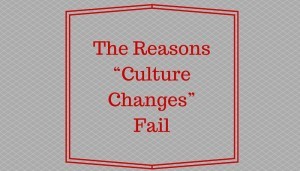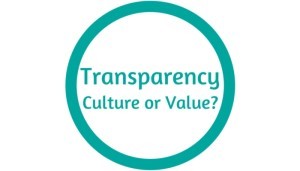Mary E. Marshall's Blog, page 33
December 2, 2015
Kindness, Character & Community Matter
 David Brooks wrote an interesting piece this week about Communities of Character and what some schools are doing to teach this.
David Brooks wrote an interesting piece this week about Communities of Character and what some schools are doing to teach this.
What struck me most about the article and the school described, was the focus on kindness and caring as opposed to our traditional focus on achievement. Kurt Hahn, the founder of Outward Bound, once wrote, “It is the foremost task of education to insure the survival of these qualities: an enterprising curiosity, an undefeatable spirit, tenacity in pursuit, readiness for sensible denial, and above all, compassion.”
The amazing result of this focus is an extremely high graduation rate and 100% of students going on to college. Brooks’ point was that character does not develop all by itself, it takes a community to provide the checks and balances, the safety net to make sure the person sets and keeps the right boundaries.
If we look at each business as a community, the joint character created is called culture, however, the “community,” or business, could certainly help all those who belong build character. If we simply replace the word “education” in Kurt Hahn’s quote with “business,” my guess is successful results would be the outcome, and consequently, happier employees.
Let’s look at these qualities and consider what they mean for business:
Enterprising Curiosity: Businesses celebrate this, inventions are thought up, new processes are created and all things move forward when we question in service of the greater good. Curiosity is not a bad thing, lack of curiosity leads to moribund business and “old ways of doing things” that usually no longer serve the original purpose.
Undefeatable Spirit: As every entrepreneur knows, you will have many failures before success shows up. Belief in the greater good, that goal, that willingness to fail, to move forward is a wonderful quality in all employees. It’s that spirit that keeps everyone going, in spite of unfavorable odds and setbacks.
Tenacity in Pursuit: Dogged pursuit of that which we know will eventually work out. Getting back up after a failure, but more importantly being supported by that community of co-workers who have your back. “We’re in this together spirit” has created many a new successful business idea.
Readiness for Sensible Denial: I’m not quite sure what Hahn meant by this one, but to me it means that it’s okay to disagree, to discuss, defend and suspend ideas. It’s okay to have discussions as long as we include everyone and are open to different points of view. It’s keeping the full 360 degree view vs the 90 degree angle.
Compassion: Last, but certainly not least! Businesses would be well served to incorporate this into their cultures. More compassion to and from employees leads to a more productive and harmonious workplace, more compassion to customers also leads to loyalty.
Think about your business as a community and what you can do to strengthen the character of those who are a part of it. I believe the result will be stronger businesses, happier employees and better communities for all of us.
The post Kindness, Character & Community Matter appeared first on Mary Marshall // CEO Coach.
November 25, 2015
Give Thanks
As we start the holid ay season with Thanksgiving, I like to remind myself that I am grateful every day for all those in our lives that allow us to do what we do as entrepreneurs.
ay season with Thanksgiving, I like to remind myself that I am grateful every day for all those in our lives that allow us to do what we do as entrepreneurs.
Let’s start with family first. As entrepreneurs, our families are the ones who most often face the impact of the long hours, lack of money and time and lack of energy. The hope of course is that at the end of the day, we’re doing it for them but sometimes it’s hard for any of us to see that light at the end of the tunnel. So let’s say thank you to all the families that support their entrepreneur. It simply would not be possible without them. For every missed meal, event or gathering, we thank you for your patience and understanding.
Next we thank all the employees that make up each of these entrepreneurial companies. They too have sacrificed family for our dreams and each has contributed their skills to make the dreams happen. Without these dedicated employees, no entrepreneurial vision could ever be fulfilled. They are the spokes on the wheel as well as the axle and engine that makes it all work. Each one comes to work every day with the intent to help us build a dream and do good work, it’s our job to make sure they can. To each of these employees, we say thank you. Thank you for your dedication, integrity, hard work and curiosity that makes all entrepreneurial companies thrive.
Lastly, we thank all those customers and vendors that support the entrepreneurial dreams of all of us. Obviously, without you, we would not be able to deliver products and services, let alone generate revenue. We appreciate that fact that you use us vs. a big box store and that you appreciate the dreams and visions that all entrepreneurs share.
So as you sit down to Thanksgiving Dinner this week, take a moment to give thanks to all those who support the entrepreneurs that truly drive our great nation. Entrepreneurship would not be possible without all of them. This Saturday, November 28th, is Small Business Saturday so support a small business with your purchases and thank the employees for keeping the entrepreneurial dream alive
photo credit: Red Spots via photopin (license)
The post Give Thanks appeared first on Mary Marshall // CEO Coach.
November 18, 2015
The Reasons “Culture Change” Fails
 Larry Senn recently published an article that outlines the steps for effective cultural change and talks about the common reasons culture change initiatives fail. He has spent the better part of 40 years studying organizational cultures and what leads to change and therefore performance improvement and what holds it back.
Larry Senn recently published an article that outlines the steps for effective cultural change and talks about the common reasons culture change initiatives fail. He has spent the better part of 40 years studying organizational cultures and what leads to change and therefore performance improvement and what holds it back.
Reason #1
The first reason cultural change does not work is that it’s not led by the CEO. If it’s not purposeful on the part of the leader it’s not going to happen. Most organizations offload “fixing culture” to the HR department, which is rarely, if ever, successful. HR has its role, but effecting a large cultural change is not one of them. My experience in a large organization where the HR Leader took over “culture” created one of the most toxic environments I have ever worked in – so much so that no one, and I mean no one, would ever go to HR for help with issues. Culture change needs to be “on purpose” by the leader and led from the top. Only the CEO or Leader can be the Chief Culture Officer, or as I say in my book, the guardian of the organization’s culture and character.
Reason #2
The second reason Senn cites is that the process does not create deep personal commitment to change, meaning it’s too “heady” or too intellectual. It may dig up a few things with 360s and the like, but no real understanding of what transformational change looks like. We are feeling beings who think, not the other way around and unless there is a profound personal “feeling” reason for the change, it won’t happen. People have to develop new habits and hanging on to the old ones is not only easier but more comfortable. Change is hard and most people want someone else to go first.
Reason #3
The third reason is that it is often a series of disconnected activities, not a cohesive, managed strategy. The monthly or quarterly training, the speakers who are the flavor of the month, none of these activities will lead to lasting change unless they are part of a very coordinated and managed strategy that works to incorporate these tactics into the fabric of the company through systems and processes. Ever heard when people say, “why do we bother with the stuff when nothing ever comes of it?” In fact, sporadic activities are not only ineffective, they can make matters worse.
Reason #4
The last reason is pretty obvious, but you’d be surprised by how often it happens. The strategy is not taken from top to bottom throughout the organization in a way that creates momentum. Cultures are living breathing things, and they keep going whether you like it or not. If the entire organization does not get behind a change, it might end up worse off than the current situation. Just because the HR director or CEO “want” a change, doesn’t mean it’s going to happen. All leaders and employees need to be engaged in the process of change in order to make it a success.
These are four very important items for trying to turn a ship around when it’s headed off course. The other piece in all of this is that a few shipmates may have to be given their walking papers along the way if they no longer fit into the new cultural paradigm
The post The Reasons “Culture Change” Fails appeared first on Mary Marshall // CEO Coach.
November 11, 2015
Five Rules for Success
 Kazuo Inamori, a Buddhist Billionaire, recently wrote a book about his success which culminates in 5 simple rules for business success, (or success in anything for that matter).
Kazuo Inamori, a Buddhist Billionaire, recently wrote a book about his success which culminates in 5 simple rules for business success, (or success in anything for that matter).
The first rule is Question your Motive. I love this one because it requires that you reflect not only on what you want for yourself, but what is your larger intention? Business success, in Inamori’s mind, is not just about what you want to achieve for yourself, it’s about what does your product or service do for the whole – the greater good if you will. When it’s no longer about the leader or leaders’ motives, but the greater good, success usually follows. This requires leaders to ask themselves the question, what am I really doing this for?
The second rule is Adhere to Perfection. I have a bit of heartburn over this one, but it’s probably semantics. He admits he is a perfectionist and it’s a habit or way of life that he adopts. I worry that perfectionism drives people crazy because nothing can ever actually be perfect, can it? However, I do agree that we need to set very high standards and always see how things can be made better for whatever purpose is at the heart of the endeavor.
The third rule is Conceive Optimistically and Plan Pessimistically. This is my favorite because you can really get some good ideas on the table, without constraints on creativity. Then you plan the execution as if everything could go wrong. This way you have covered the bases and are prepared when obstacles come up. Testing an idea or theory is not a bad thing and we should try to shoot it down before it gets to market. This would have saved a LOT of companies money over the years. Often we are afraid to question an idea someone else has come up with for fear of offending, but we need to so failures never get out of the gate. However, this can go to the extreme if a company’s culture supports ridiculing or busting others’ ideas as office sport. Balance in everything works well.
The fourth rule is Attitude x Effort x Ability. As I’ve said many times, it’s more important to hire for attitude and train for skills because you can’t change attitudes easily, if at all. Inamori looks for character first, which includes the effort one is willing to put towards a task. Ability comes last because in most cases it can be trained, and someone with great ability and a negative attitude will have difficulty in succeeding.
Number five is easy – Set Goals Beyond your Abilities. Stretch yourself, dream big and you have a much higher likelihood of getting there. He is a believer in the power of positive thinking, and I agree. It’s not the complete formula for success, but it’s a powerful ingredient that when absent, almost always dooms the endeavor to failure.
These five rules are from a very successful man and are really a very simple recipe for business. Take a look and see which you are already doing and which ones you might want to incorporate into your culture. You might be surprised by the results!
The post Five Rules for Success appeared first on Mary Marshall // CEO Coach.
November 4, 2015
Transparency – Culture or Value?

There was an interesting piece last week on E consultancy about 5 Digital Companies with Transparent Company Cultures .
The companies cited were great examples of those doing things differently and getting better results. However, I would challenge the assertion in the article that it is because of “transparent company cultures.” Instead, I would posit that “transparency” is actually one of the values of each of these companies. I say this because the result of valuing transparency is that more is shared and behaviors are driven by this value, therefore the culture operates differently than larger, less transparent organizations.
I have found that this is where leaders and companies get mixed up when it comes to talking about culture. Culture is a result of the stated or unstated values that the people in the company hold. Values then drive behavior. So in the case of each of the 5 companies in the article, transparency, or the belief that sharing of information is good for everyone, ultimately prevails and creates a very collaborative culture that encourages sharing.
Each of the teams inside the various organizations defined how they wanted to share, what that meant to them, and why it worked. This enabled others to want to join the team, based on the values that led to processes that they could agree with. We gravitate to what we believe in and even more so when we can help create it.
There isn’t a “one size fits all” recipe for a transparent culture. There are those that value transparency and behavior develop as a result of that. What is good about all 5 companies described in the article is that they are doing well, people like working for them, and with the exception of AirBnB’s recent PR misstep, (perhaps an overshare?), transparency as one of their values is working for them by producing results.
Transparency – How Far Should it Go?
Transparency, however, is not everyone’s cup of tea and a key question is – how far should it go? Most entrepreneurs don’t want to share the “secret sauce” for how their product or service is configured. Things like people’s salaries and how much the owner is taking home are also questions as far as how much should be shared.
So can you have transparency as a value without sharing everything? Yes, you can. It comes down to what is the purpose of the value of transparency for your company? If it is that it creates a more collaborative environment and a better, faster, work product is created, then maybe salaries are not a part of it? You have to be very careful about the values selected and the intention behind them before launching forward, otherwise unintentional consequences are bound to be the result.
Spend some time thinking about your values, your company’s values, and what you expect as a result of those values. Selecting the right ones for you, with the precise definitions takes time. It’s not an afternoon whiteboard session. After examining what you want them to be, you and your team should “wear them around” for a while to make sure they really fit. This is critical because it’s something that is very difficult to change later after you have gone down the path and values, (intended or unintended), have taken root.
The post Transparency – Culture or Value? appeared first on Mary Marshall // CEO Coach.
October 28, 2015
Why Small Business Matters

2015 SBA Emerging Leaders Graduating Class
Last week 15 small business owners from Washington State graduated from the Small Business Administration’s Emerging Leaders Program here in Seattle. For the third year in a row, I have had the privilege of teaching the class with my partner, Melanie Norton, from the SBA. The curriculum, provided by Interise, is an amazing journey for most small entrepreneurs. The result of the 7-month course is that each business walks away with a strategic growth plan that they can implement, (and most do). Interise and the SBA have shown this to be one of the most effective uses of taxpayer money because for every $200 spent a new job is created.
These facts are impressive, but the reason small business really matters is the impact that each and every small business owner has on their staff, their customers, and their communities. All of the participants in all three years have been amazing and inspiring and this year was no different. These leaders and their businesses make a difference in their communities. One of this year’s participants was Carolyn Hurst, CEO of Barker Creek Publishing in Bremerton, WA. Carolyn’s explanation of the benefits afforded the owner and every key employee of a small business is: “The opportunity to learn new skills and practice creative problem-solving…each and every day.”
Carolyn reached out to all current and former employees on Facebook to ask what working at Barker Creek meant to them. Here is just one of the more than 30 responses she got back in less than 24 hours from her employees and THIS is a fantastic example of why small business really matters:
Emily M. Where do I start??? Barker Creek gave me and SO many others the best environment possible to have one’s first job. Barker Creek always felt like a family (and still does), but you also found a way to balance that with letting employees know what being a good worker was all about. This is a hard line to walk when you care about your employees as much as you do, but you did it gracefully. I learned what being a good business woman was all about from you. It means weighing business decisions with the impact it will have on all stakeholders, taking care of your employees, and doing what you can to give back when you can. I think we can all agree that Barker Creek gave a lot of people their first job, and let them grow by giving them chances that many other businesses wouldn’t, but I also don’t want to understate what Barker Creek does as a *business*. Barker Creek has always tried it’s hardest to create the best products for schools and homeschools and takes a customer first approach that many big and small businesses struggle with implementing. This is seen with Candi ‘s steadfast dedication to helping customers out all day every day, even if that means multiple phone calls to the same person within a few hours, or keeping her happy and friendly attitude in fact even if things aren’t so great for her that day. I also want to mention Tessa for teaching me and many, many others what attention to detail truly is. I think learning this really set me up for success in the programming world… I could go on and on and on!!!!!! Forever grateful for everything you have done for me, Cary!
So if you are a small business owner I salute you! I also recommend that you check out the resources available to you through the SBA including the Emerging Leaders program. My passion is to help entrepreneurs achieve their dreams and these resources are one avenue to help make those dreams a reality.
The post Why Small Business Matters appeared first on Mary Marshall // CEO Coach.
October 21, 2015
I Can’t Get No Satisfaction!
 Apparently, that’s what employees are saying in the Achievers’ 2015 North American Workforce report. They want to “feel inspired by their leadership, valued for their contributions and aligned with company objectives.” According to the report, here is how they are currently feeling:
Apparently, that’s what employees are saying in the Achievers’ 2015 North American Workforce report. They want to “feel inspired by their leadership, valued for their contributions and aligned with company objectives.” According to the report, here is how they are currently feeling:
51% of employees are not happy at work.
61% of employees don’t know their company’s cultural values.
53% of employees don’t feel recognized for their achievements at work.
Wow, that’s a pretty big swath of the workforce that isn’t feeling very productive. Yes, that’s right, when employees aren’t happy, productivity is the first casualty. Unaligned and unintentional cultures are the next consequences.
So what should we do about it? Entrepreneurs have it easier than the large firms because they can be more nimble and make some changes quickly. Larger organizations typically have a harder time making a shift. Here are three things you can do as the leader of your organization to make sure your employees are not as unhappy as the ones who filled out the survey.
First, “walk the floors” now and then, and do It virtually if you have to. This means let everyone see you, say hello, ask how they are doing, be genuinely interested in what they are doing for your company. Communication from the leader is critical to employees feeling connected to the organization. A simple “good morning” and a smile will make someone’s day a little better. Don’t be a hermit.
Second, (and I know I sound like a broken record on this), but identify and share the company values. This is such an easy, no cost thing for companies to do and some leaders feel like “they shouldn’t have to, everyone knows what we stand for.” If they did, 61% would not say they didn’t. Besides, how can employees be happy if they don’t know what the values are and whether or not they are aligned with them? Employee turnover is more often than not due to character or value misalignment than skills – shouldn’t the employee and the employer be clear about values going in? And values are not a “squishy” subject, it’s proven that values-aligned companies have better returns and higher productivity. Besides being good for the employees on the happiness scale, it’s good for the bottom line. Win-Win.

Lastly, how does your company recognize employees? Once a year at the company party? Probably not enough. If you have at least 25 or more employees, find someone who is particularly good at recognizing people and have them put some fun programs in place. Yes, people get paid to do their jobs, and they also want to know that they are valued and appreciated which is not pay related. They want to know that someone notices their work and contributions. It doesn’t take much to tell someone they are doing a good job. Coming from the CEO, it also means a lot more. You need to go first and the rest will follow. If you value your employees, tell them.
All of these little, inexpensive steps will help your employees feel more connected and, therefore, happier when they are at work. What that does for the company is increase productivity, decrease turnover, and make it a more satisfying place to work.
The post I Can’t Get No Satisfaction! appeared first on Mary Marshall // CEO Coach.
October 14, 2015
Scaling Up
 I work with a lot of small to mid-sized entrepreneurs and start-up businesses that are trying to grow. For every business, the “secret sauce” is a little different, but at the end of the day, it’s not complicated, it’s just not easy to do. So I read with great interest a recent interview with Box CEO Aaron Levie because he put the issues so succinctly.
I work with a lot of small to mid-sized entrepreneurs and start-up businesses that are trying to grow. For every business, the “secret sauce” is a little different, but at the end of the day, it’s not complicated, it’s just not easy to do. So I read with great interest a recent interview with Box CEO Aaron Levie because he put the issues so succinctly.
He had 4 keys that he felt led to Box’s success:
Go where the business is
Hire to fit your culture
Have a mix of experience levels
Communicate whenever possible
The first one is pretty simple. When deciding to go into business, we often think we know who our product or service is best suited for, however, we need to read the market and see where the niche really is and do some reality testing vs. what we initially thought. Box found that enterprise clients were the ones who really needed their service, not necessarily individuals.
The second recommendation is something you hear me talk about a lot! Hire to fit your culture. At Box, they’ve identified their values as High Energy, Optimistic About the Future, Collaborative, Positive, and Disruptive. By hiring for these values, they move the company forward much faster and minimize the cost and disruption of a mis-hire. I love the fact that they have been doing this from day one – and look at their results!
The third point is important, but often forgotten, especially when young start-ups think only other young people can think like they do. Box has made it a point to hire both experienced and inexperienced leaders and executives to create a diverse team. This is also disruptive in a positive way by bringing different backgrounds and experience together while still opening the door to new ideas, methods and thinking. It fits their culture beautifully.
The last point is also something that I constantly encourage – communicate, communicate and then communicate again. People will make up stories in a vacuum and too often leaders think they’ve communicated, but no one really knows what’s going on. People need to be in the know. They need to know that what they are doing is making a difference and is relevant. They need to be a part of something. Good communication is the way to make sure you’ve created an inclusive and informative environment so that everyone is productive.
None of this is rocket science, however, the combination of these four simple steps has led to phenomenal success for Box and applied to your company, can improve your results too. It’s never too late to implement best practices, especially as they relate to creating a culture of performance and living the organization’s values.
The post Scaling Up appeared first on Mary Marshall // CEO Coach.
October 7, 2015
Review, Revise, Reinvent, Then Repeat
 Yes, it’s that time of year again to dust off the old strategic plan, or goals and see how you are doing. If you’ve been doing this monthly or quarterly, or even better bi-weekly, good for you, but you are in the minority. It was Eisenhower who said, “Plans are nothing, planning is everything,” and he was right.
Yes, it’s that time of year again to dust off the old strategic plan, or goals and see how you are doing. If you’ve been doing this monthly or quarterly, or even better bi-weekly, good for you, but you are in the minority. It was Eisenhower who said, “Plans are nothing, planning is everything,” and he was right.
I often go into companies and they are so busy doing business, meaning day-to-day operations, etc., that the goals they set out at the beginning of the year have ended up ignored. Don’t get me wrong, these companies are having some success and things are going along well, but what if more attention had been paid to those nicely laid out plans? Would they have achieved that extra 10% top or bottom line? Would they have added that crucial market sector they have been after for years? The reality is, it’s doubtful. Let’s consider why.
Continuous planning coupled with execution is one of the keys to business success. If you plan at the beginning of the year and never adjust you are always reacting to what’s happening instead of making things happen. To change this trajectory start by reviewing what you thought you wanted to accomplish this year – how did you do? What happened? What can we learn from that? The next step is to revise, change what didn’t work, and come up with some new ideas or strategies that might work. Or maybe the goal or strategy itself was not a good one, so chuck it out and come up with something more relevant.
Of course, it goes without saying that you don’t want to do this process of review and revise in a vacuum. You may be the owner or head of the company, but that doesn’t mean you have all the best ideas. The ideas are in the room. They are from your managers and employees whom you have hired and put faith in. Listen to what they have to say and shape it into a plan that everyone can get behind.
The last step is to reinvent. So often we are caught in our plan because of our beliefs around “what is.” It colors our beliefs about what “could be.” When I facilitate planning exercises, I tell people to think 3 years ahead and color in the picture for me of what the company looks like, who the customers are, what products are you selling and to whom, etc. But NOT based on the facts of today, based on the possibilities of tomorrow. It’s only in our belief that something can happen that it will. So reinvent the future, not by the rules or restrictions of today’s landscape, but by the possibilities not yet imagined.
This doesn’t need to be a long drawn out process, you need a competent facilitator (preferably not you, the owner or leader) and a target of where you want to go. The bones of a plan that can be implemented and an easy process for getting there. Too much complexity in the strategic plan and everyone will lose interest. Keep it simple and executable. And remember to build in your review times so you can revise and reinvent, then repeat!
The post Review, Revise, Reinvent, Then Repeat appeared first on Mary Marshall // CEO Coach.
October 1, 2015
Don’t Forget the Conversation
 I found the recent NY Times Op-Ed piece entitled “Stop Googling. Let’s talk.” very interesting for a couple of reasons. It was a good examination of what having our devices tethered to us 24/7 has done to us and how it’s changing the behavior of the “digital natives” that have grown-up with them.
I found the recent NY Times Op-Ed piece entitled “Stop Googling. Let’s talk.” very interesting for a couple of reasons. It was a good examination of what having our devices tethered to us 24/7 has done to us and how it’s changing the behavior of the “digital natives” that have grown-up with them.
The first finding I found most interesting is that a result of texting and emailing vs. actual in-person or phone conversations is creating a lack of empathy on the part of the user. When all communication, both good and bad, can be done without seeing or feeling the person’s reaction to it, the sender doesn’t have to deal with the consequences of their communication style. As a result, the study found that there was an inability to feel or understand how another might be feeling. They also found that teenagers were behaving more like 8-year-olds on a social empathy level and that in many ways they were lacking the ability to empathize or understand the effects of their behaviors.
Obviously, what’s missing is the impact words alone can have on someone when the corresponding social cues of tonality and facial and body movements are not visible. A set of words or a single word can be read or interpreted so many different ways, as can an emoji for that matter. The receiver receives it through their own filters, irrespective of the sender’s intent. And that is the message delivered. So now conversations are had in one’s own mind, and more often than not, they’re warped.
Conversations Are Powerful
What the researchers found is that people are longing for conversation. The sound of a voice, the reaction to something said in person or on the phone. We were meant to hear and see others. We were meant to converse. Interestingly, they also found that actual conversations lead to higher productivity, not less, as is commonly believed. People need to feel connected to one another in the workforce. Why do you think the “water cooler” conversations are some of the most important in some workplaces?
So what’s a leader or manager to do with these digital natives who can type a mile a minute and text without looking at the keyboard? Insist that it’s time to put the phone down and away for long periods of time. Being connected 24/7 never lets you quietly think. It’s like a stimulus crutch and it prevents deeper thinking and reflection. Some workplaces are offering cell-free zones where phones are not allowed in order to encourage conversation. Others are designating times that cell phones must be off.
My advice is to just start having more conversations in-person or via phone. Don’t try to do it via email or text. Follow up with email if you are documenting something but let conversations do the heavy lifting. People need other people to feel whole and use all their senses to get that connection by taking cues from tonality, words, and facial expressions and body movements. People are also hardwired for belonging and belonging comes through a sense of connection. The more your employees feel that they belong to your company tribe the better. I believe the results of reducing dependence on digital devices for communication will be more productive and more rewarding for your entire organization.
The post Don’t Forget the Conversation appeared first on Mary Marshall // CEO Coach.



